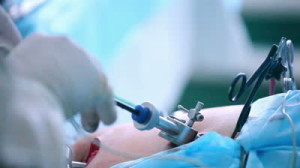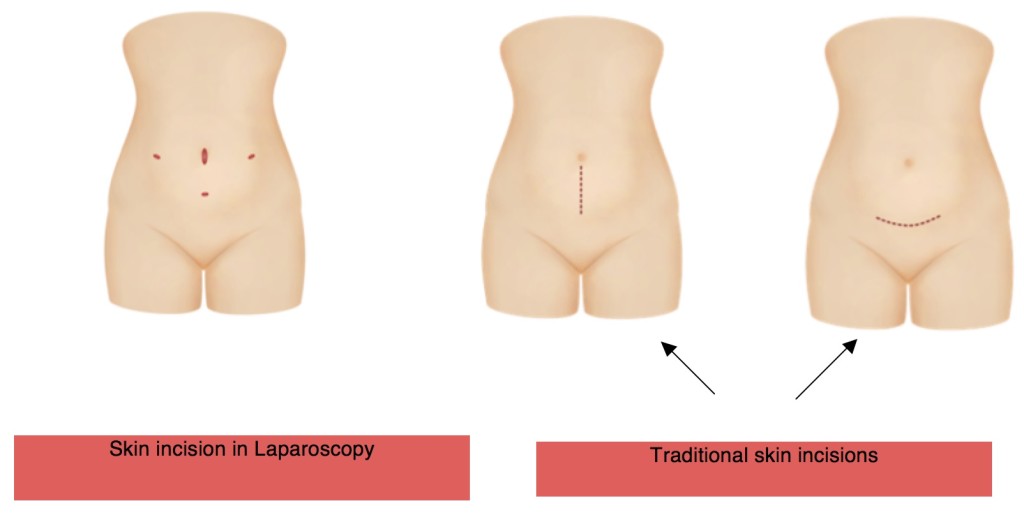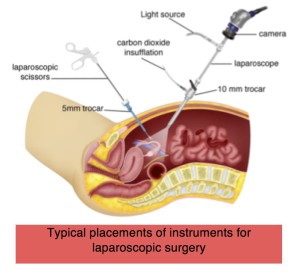
Source: middlegeorgiasurgery.com
You may be familiar with the proverb “ The best things in life are free”. Today, we are going to introduce to you a new proverb : “ The best things in life are small”. Ready?
Many women in their lifetime would have undergone a surgery. Whether a minor or a major surgery, it is a nightmare to go through a surgery. By the age of 60 , 1 in every 3 women would have undergone a hysterectomy (surgery to remove the womb). Scary, isn’t it? Traditionally, gynaecological surgeries (surgeries involving female’s reproductive organs), are associated with big skin incisions, painful and slow recovery. Longer recovery means loss of quality time either family, personal or professional. For some, it means loss of income.
The good news is, gynaecological surgeries have evolved so much that the traditional phrase ‘big skin incisions, painful and slow recovery’ has now become ‘small holes, nearly painless and out-of-hospital the next day’ .
This procedure is called laparoscopic surgery or keyhole surgery. Did you know that laparoscopic surgery has been reported since 1930s’, yet many women do not know about this ? Well, no more.
Laparoscopy generally requires between 2-4 small ‘keyhole’ incisions on the abdomen (tummy). Through these small holes, instruments such as a laparoscope (thin telescope-like instrument), scissors and grasper are introduced to perform the surgery.


Currently , most of the gynaecological surgeries can be done laparoscopically. Even some gynaecological cancer surgeries are done this way!
Commonly performed gynaecological laparoscopic surgeries are:
- Hysterectomy (removal of womb)
- Myomectomy (removal of Fibroid from womb)
- Cystectomy (removal of a cyst from ovary)
- Diagnostic laparoscopy (surgery to find a diagnosis such as in pelvic pain or part of treatment of infertility)
- Tubal ligation (permanent sterilisation for female)
- Fertility-related surgeries (surgeries that are needed to help a women to conceive)
- Endometriosis surgery
- Surgery to correct prolapse of uterus/womb
- Cancer surgeries (cancer of womb and cervix)
You may be wondering how laparoscopic surgery can achieve ‘small holes, nearly painless and out -of-hospital the next day’? You are not the only one asking this question and this is not the only question asked. FAQs (frequently asked questions) include
How will my surgical wound looks like?
Your abdomen will usually have between 2-4 (0.5-1cm) holes. The wound normally heals very well.
Is there any way to do surgery with smaller scar on my tummy?
Fortunately for you, YES , there is a way. It’s called Single Incision laparoscopic Surgery, where only ONE cut about 2 cm is made at the umbilicus. However, it is not suitable for all types of surgery .
Surgery through a small hole ? Are you kidding me?
We are no magicians. We use thin, small instruments to do the surgery. The laparoscope helps us to see the internal organs in a magnified view which is projected on a TV screen. Laparoscopic surgery needs a surgeon to be skillful in handling the instruments, hence not all surgeons offer this of surgery for you.
Why is there less pain in laparoscopy?
In traditional surgery (laparatomy), big skin incisions are made in order to gain access to internal organs. On the contrary, in laparoscopy only tiny punctures are made. Thus, post surgical pain as a result of wound healing is more severe in traditional surgery than in laparoscopy.
How early can I walk after the surgery?
On the same day if possible! Because there is less post surgical pain, you can already walk after you do not feel dizzy due to the effects of anaesthetic medications.
“Out of hospital the next day”, is this possible ?
Definitely a big YES, but it depends on the type of surgery done. It is even possible to go home the next day after a major surgery such as hysterectomy. This can be achieved because of quicker return of bowel function and very little pain after surgery. For certain type of surgery, the patient can go home on the same day after the surgery! Generally, 1-2 nights stay after surgery can be expected.
How will I know if laparoscopy or conventional surgery is better for me?
Laparoscopic surgery can reduce the chances of adhesion (scar tissues inside abdomen) formation. In laparoscopy, only fine instruments are used to perform the surgery, whereas in traditional surgery, the surgeon places his/her whole hand inside the abdomen. Therefore, traditional surgery has a higher likelihood of adhesion formation. This is especially important if you want to conceive because adhesion in the area of Fallopian tubes and ovaries may lead to difficulties conceiving.
Is laparoscopic surgery safe?
Any surgery, however small it is, has its risks. In laparoscopy, the magnified vision helps the surgeon to see the internal organs better. This can lead to reduced bleeding. Moreover, infection risk can be reduced because the internal organs are not exposed to the room air. Expert use of the surgical tools may lead to a better surgical outcome. In short, the skill of the laparoscopic surgeon can determine the outcome of the surgery.
Well ladies, I hope by now you have a better understanding about laparoscopic surgery. I hope you could appreciate the benefits that it offer you. God forbid , if you need a gynaecological surgery in future, ask your gynaecologist about laparoscopic surgery and discuss all the options available. Don’t get a big scar for no reason and don’t make me say “I told you so..”
Remember, “The Best Things In Life Are Small”
This article is written by Dr Agilan (MRCOG) and Dr Selva (FRCOG).
[This article belongs to The Malaysian Medical Gazette. Any republication (online or offline) without written permission from The Malaysian Medical Gazette is prohibited.]
